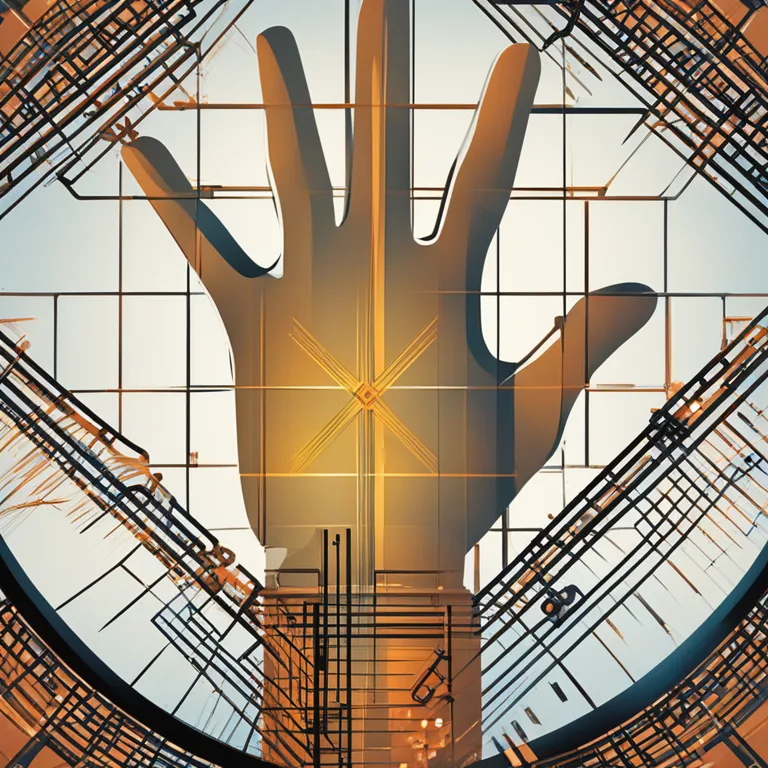
Palmistry and Longevity: Can Your Palms Predict Lifespan?
Discover the intriguing connections between palmistry and life expectancy predictions, and what palm readers look for when assessing longevity.
article by Nora Pennington
The Allure of Palmistry
Palmistry, or chiromancy, has been practiced for centuries as a way to glean insights into one's character and future by examining the lines, shapes, and features of the hands. It's a component of a broader mystical tradition that includes astrology and other divinatory arts, captivating those who seek to understand life’s mysteries. Today, we continue this ancient practice with renewed interest, especially when it comes to predicting significant life events — including life expectancy.

The Lifeline’s Tale
Central to the discussion of longevity is the lifeline, the prominent line that arcs around the base of the thumb. Contrary to popular belief, palmistry experts assert that the length of the lifeline does not determine the length of one's lifespan. Rather, the quality of this line — its depth, clarity, and continuity — may provide clues about vitality and general well-being throughout an individual's life.

Quality Over Length
Astute palm readers focus on the condition of the lifeline. A clear and deeply etched line suggests a robust constitution and resilience, while a faint or fragmented line may indicate periods of ill health or challenges. However, even these interpretations must be taken with a degree of skepticism, as palmistry is not a scientifically proven method for determining life expectancy.

Complementary Indicators
While the lifeline is significant, it is just one of many indicators in the hand. Palmists also examine the heart line, head line, and fate line, in addition to the mounts and fingerprints, to piece together a more comprehensive picture of an individual’s life journey. Marks like crosses, chains or grilles on the lifeline itself can also suggest particular life events which may impact an individual’s vitality and, indirectly, their longevity.

The Modern Palmistry Perspective
In the modern context, palmistry is seen less as a predictive science and more as a tool for self-reflection and personal growth. It can provide insights into personality traits and tendencies, which in turn influence life choices and outcomes. In this way, a palm reading might indirectly signal the potential risks and opportunities that could affect one's lifespan, but it doesn't serve as a deterministic forecast of longevity.
The Verdict on Prediction
So, can palmistry predict your life expectancy? The consensus among contemporary practitioners is cautious: while interesting patterns may emerge from a palm reading, life expectancy is influenced by a myriad of factors, including genetics, lifestyle choices, and environmental conditions — elements that the palm alone cannot fully disclose. Palmistry, then, invites curiosity and introspection rather than providing definitive answers.
Interpretation with Responsibility
For anyone seeking a palm reading, it is essential to approach the experience with an understanding of its limitations. An ethical palm reader will avoid making unfounded claims about life expectancy, focusing instead on the rich symbolism found within the hands that might inspire positive change and awareness.
Published: 1/5/2024
Modified: 1/5/2024
More predictions
Come back here soon to learn more about yourself and your future


The Dynamic Nature of Palm Lines
Discover the fascinating reasons behind the changing patterns of your palm lines and how they reflect the story of your life.


The Essence of Hand Analysis: A Guide to Palmistry
Delve into the art of palmistry, the study of hands, revealing how reading palms can provide insight into one's personality and future.


The Dynamic Nature of Palm Lines Explored
Discover why palm lines can change over time, delving into the science behind these shifts and what they might signify in the realm of palmistry.